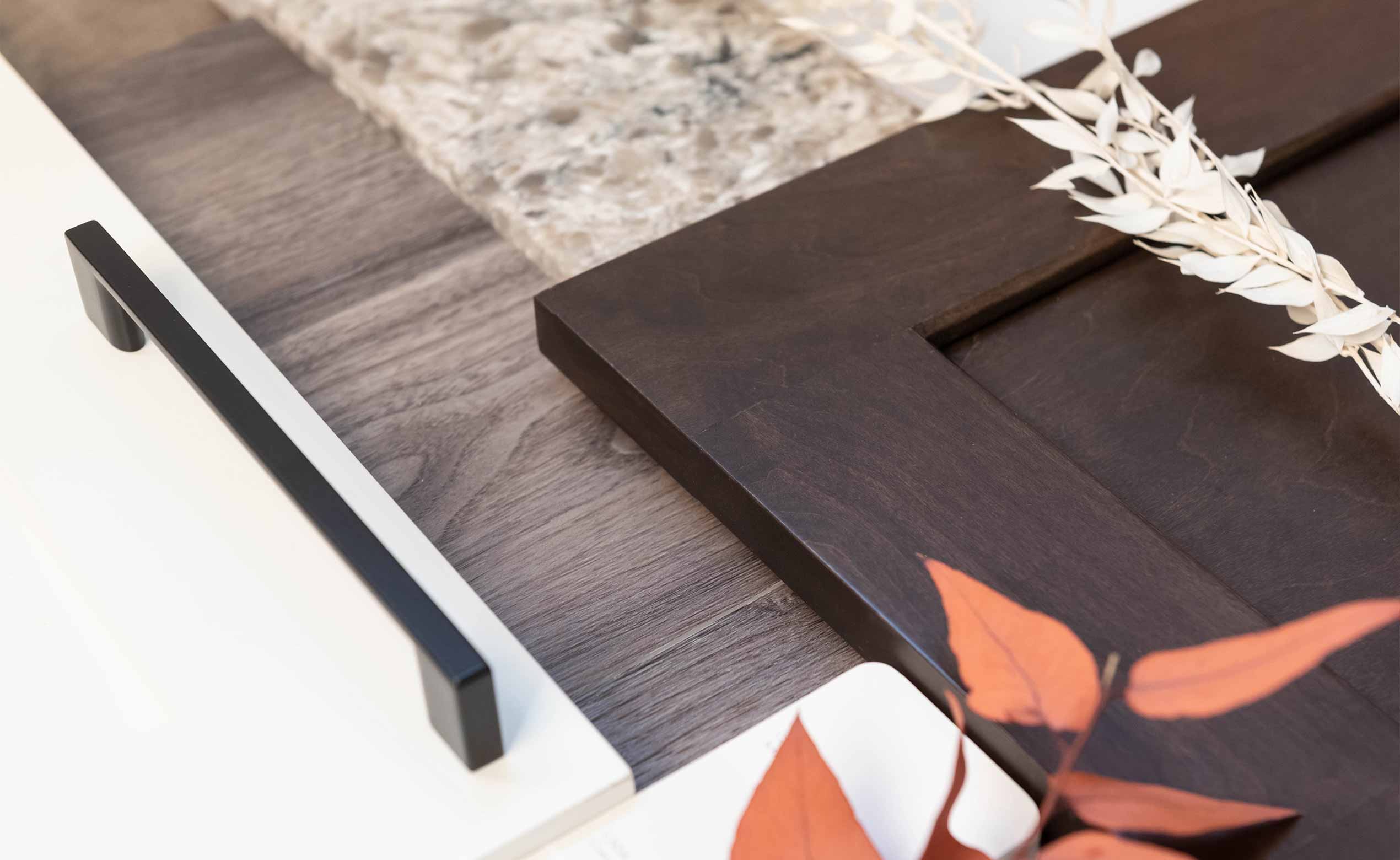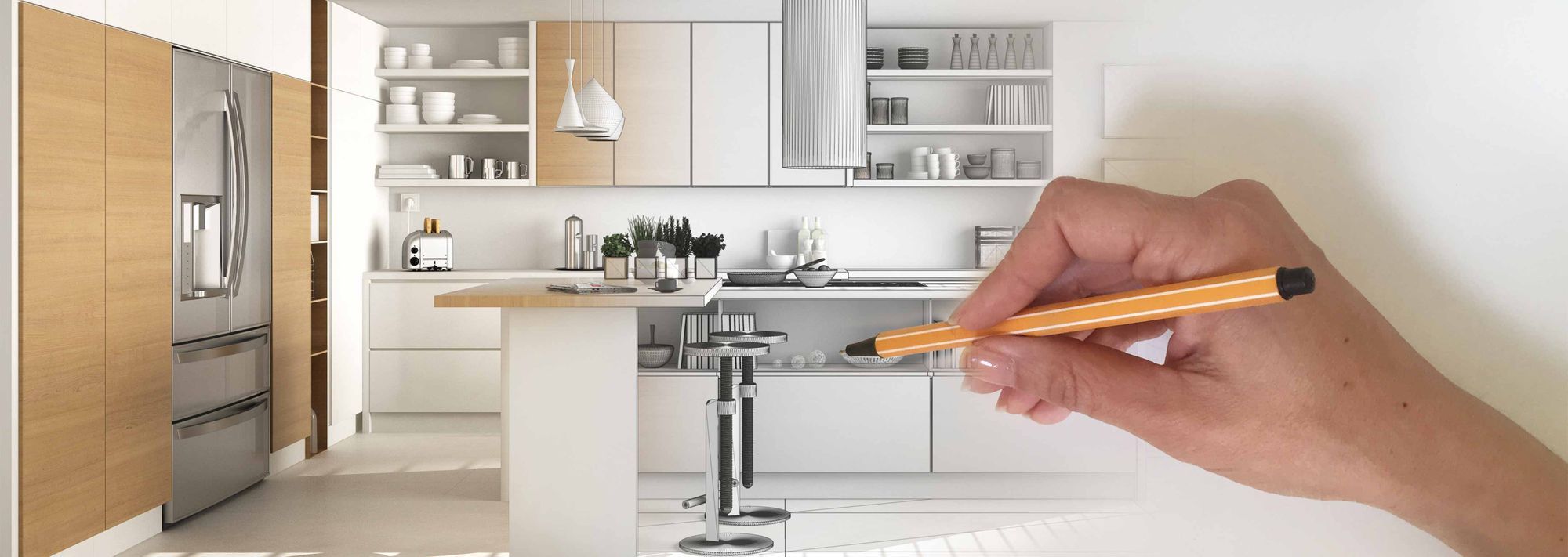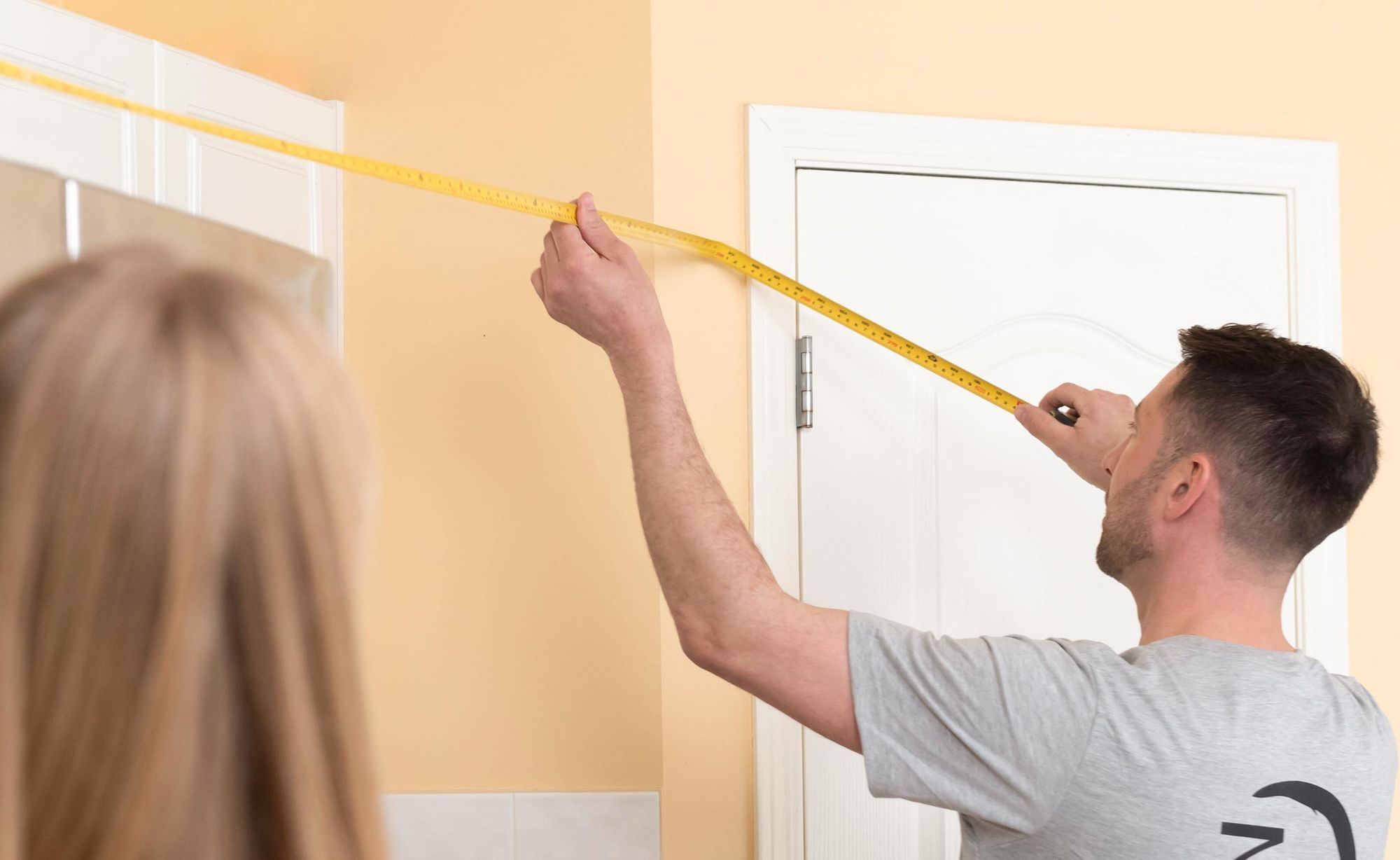Here are some steps to take when budgeting for a kitchen that will ensure that in the end, you love your new kitchen, and your bank account still loves you!
Step 1: Determine your needs
Creating your dream kitchen can be a nightmare when it does not go as planned. Determining your needs can help you plan a budget, keep everything on track and make sure that spending does not get out of control.

Ask yourself these questions to clarify your exact needs and priorities:
- Are you planning to resell your home or is this your long-term home?
- Are you thinking about a simple update, upscale renovation, or complete refresh?
- What do you do in your kitchen every day?
- What do you like and dislike about your current kitchen?
- What is the main function of your new kitchen?
- Will you be hiring any professionals?
Step 2: Plan for the Expected
A typical new kitchen ranges from $2500 to $40,000. It depends on many factors, including the size of the kitchen, the quality of the materials, and the complexity of the job. Let’s get started setting a priority list of must-haves and assigning an approximate amount to each one.
Here are some popular budget benchmarks to help. Allocate budgets to each element accordingly:
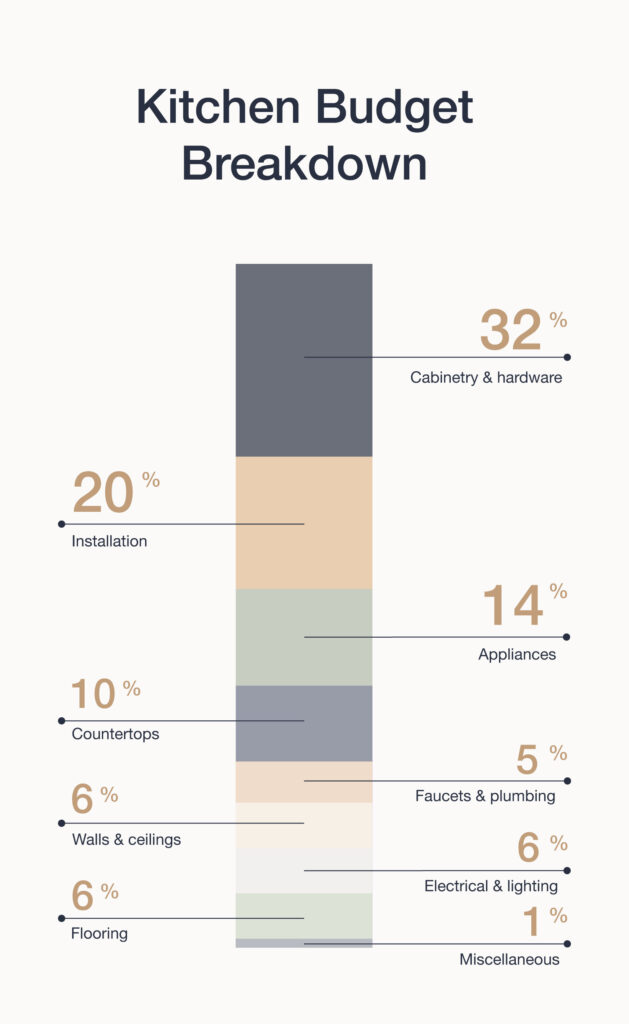
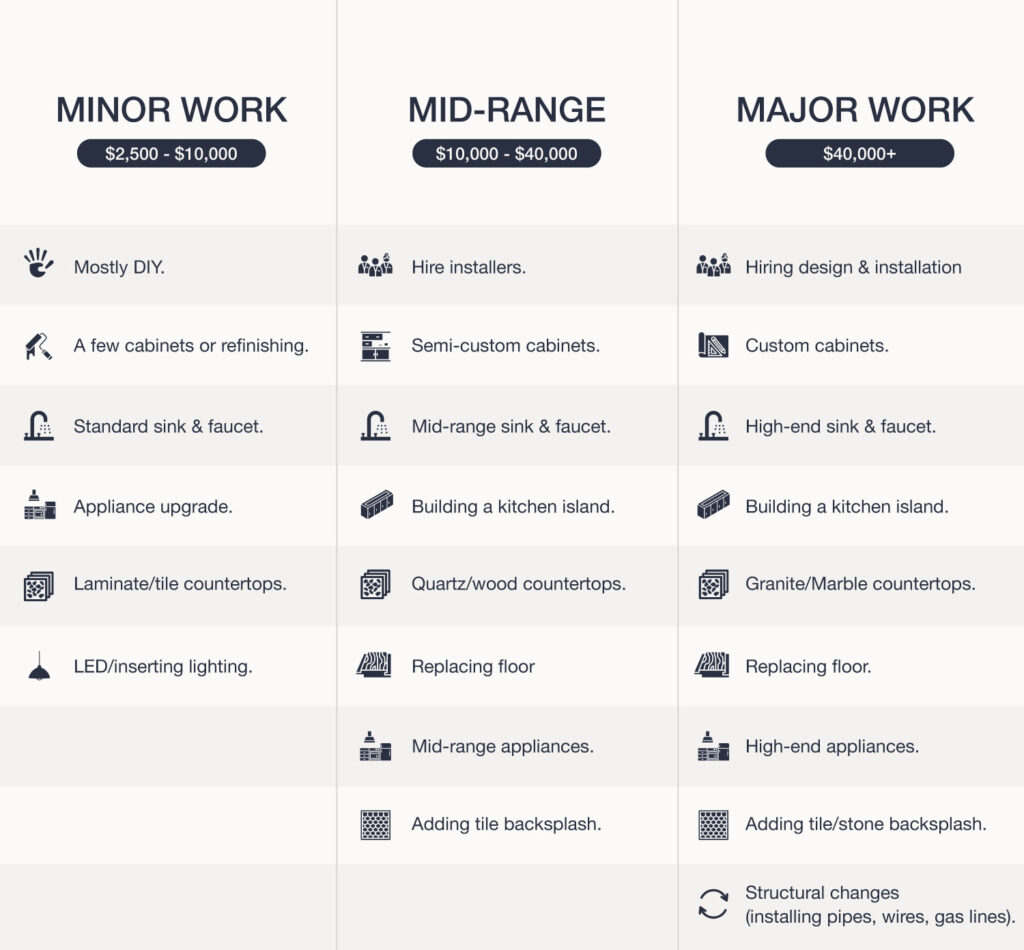
Step 3: Plan for the Unexpected
Renovating or building a new construction rarely goes perfectly, even with advanced planning. There can be surprises behind the walls or under the flooring that have gone unnoticed, especially in older homes that may have gone for years without much maintenance. Remember, if the kitchen design needs to change, so does the budget. Always allow an additional 10% for contingencies.
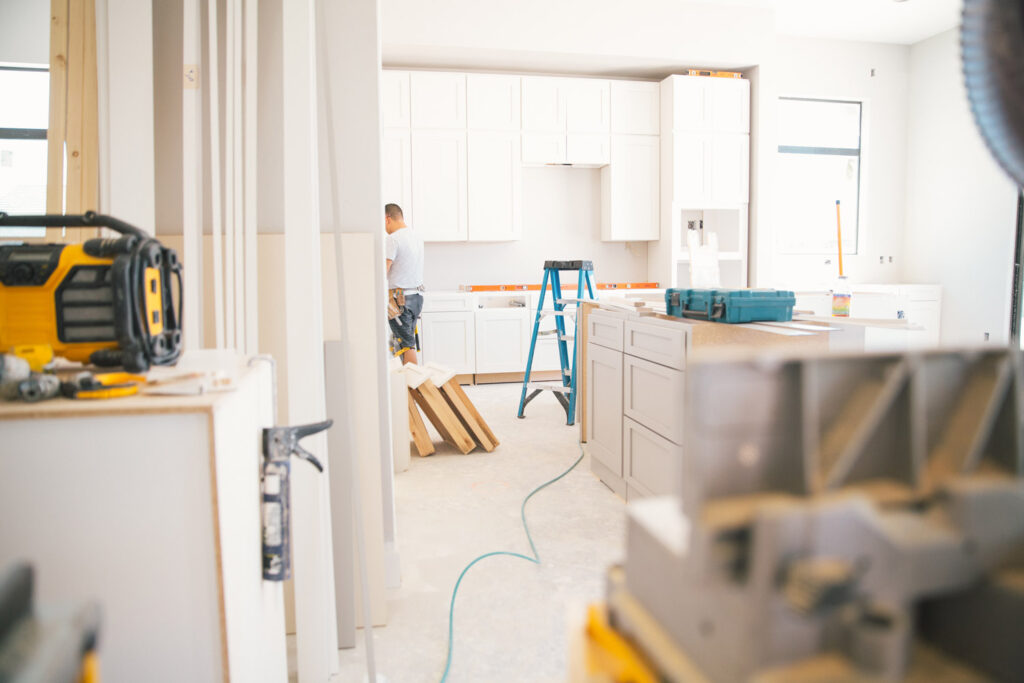
Some Money-Saving Advice:
- Compare quotes from the kitchen makers. It can give you a good idea of your labour costs and help you with your planning.
- Shopping smart: Start early and take time to find bargains. Keep in mind that buying in-stock merchandise usually costs less.
- Keep your current layout: Reducing moving plumbing, gas, or electrical can hike down your budget.
- Get free professional services: Let your designer know that cost is a priority. They will use their expertise to help design your kitchen with cost in mind.
It is difficult to know the exact cost of your new kitchen from the outset because each project has its own unique needs, features, materials, and designs. A small, mid-range, or high-end kitchen has different costs based on allocating money for appliances and quality. If you are having trouble with the initial phase of the budget, contact one of our kitchen design professionals for a FREE Kitchen Design Consultation.


